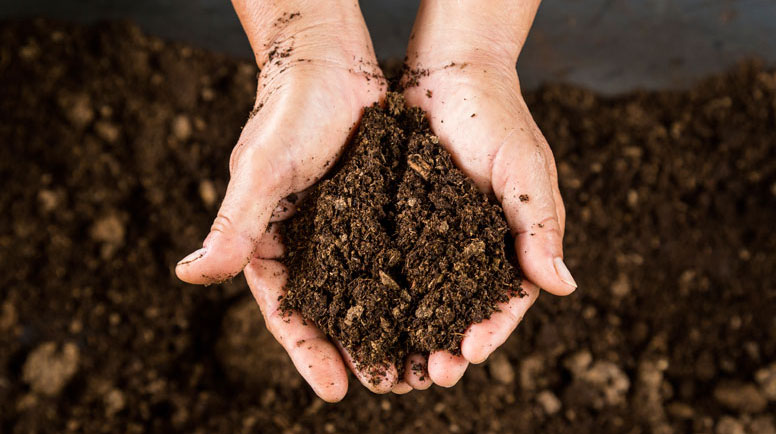How to Make Your Grass Green by Creating Healthy Soil
 A beautiful lawn begins with what's underneath the grass: the soil. One of the most common causes of an unhealthy lawn is unhealthy soil. Without nutritious soil to feed your grass and nurture your plants, that gorgeous, thriving lawn you've always dreamed of will be extremely hard to create. People often ask “how to make grass green”. The secret behind the greenest lawns is dynamic, nutrient-filled fertilizer that enriches soil like Revive Organic-based Soil Treatment, but there are also other methods that can help fill your soil with all the nutrients your lawn is craving. The following story has some helpful tips:
A beautiful lawn begins with what's underneath the grass: the soil. One of the most common causes of an unhealthy lawn is unhealthy soil. Without nutritious soil to feed your grass and nurture your plants, that gorgeous, thriving lawn you've always dreamed of will be extremely hard to create. People often ask “how to make grass green”. The secret behind the greenest lawns is dynamic, nutrient-filled fertilizer that enriches soil like Revive Organic-based Soil Treatment, but there are also other methods that can help fill your soil with all the nutrients your lawn is craving. The following story has some helpful tips:
Creating and Maintaining Healthy Soil
Plants require many nutrients, including three primary nutrients: nitrogen, phosphorus, and potassium. Nitrogen is needed for leaf growth, phosphorus for root growth and seed formation, and potassium to maintain overall vitality and contribute to the movement of sugar and starch. All of these nutrients come to the plant through the soil.
When soils do not have sufficient nutrients available, deficiencies can be seen in plants by their stunted growth, discoloration of leaves, or weak flower production. Under these conditions, otherwise healthy plants like flowers, shrubs, vegetable bushes, trees and grass, become vulnerable to disease and insect damage.
Nitrogen is regularly depleted in the soil and needs to be added periodically for optimum plant growth. Other nutrients such as phosphorus and potassium may also be deficient. The only way to ascertain if your soil has the proper levels of available nutrients is to have a soil test performed.
What is a Soil Test?
In the same way that a doctor will order a series of tests when you are sick to determine what is wrong with you, a soil test looks to see what might be wrong with your soil. Your lawn care company can perform soil testing and interpret the analysis for you. Many local extension offices provide guidance in this area as well. The individual conducting a soil test will collect small samples of soil from various parts of your lawn or garden. The samples are then sent to a laboratory for analysis, with results being provided in a report.
Foremost on the report is determination of the soil pH, a measure of how acidic or alkaline the soil is. Generally, soils in the northeastern United States tend to be acidic and trend increasingly alkaline as you move south and west. Nutrients have different availability to the plants at different pH levels so the goal is to determine the pH level and to amend the soil to bring the pH into the desired range. For example, if the soil is acidic, limestone will be applied. Should the soil be alkaline, an acidifying fertilizer or sulfur is applied. The soil test results will provide the recommended amounts of limestone, sulfur and fertilizers necessary to provide optimum growth.
A soil test gives clues to specific problems and provides a basis for a fertilization program. Because lawns have a long growing period, they require multiple, small applications of fertilizer spaced at pre-planned intervals. The object is to have nutrients available in sufficient quantities to satisfy plant growth requirements.
Beyond Fertilizers
Applying fertilizer to your lawn and flower beds is an effective and relatively fast way to create and maintain healthy soil. There are other things you can do throughout the year to help maintain your soil’s health:
- Composting. The breaking down of grass clippings, leaves, twigs, small branches and fruit and vegetable peelings into humus orcompostcan add valuable nutrients to flower beds.
- Grass clippings.When allowed to decay naturally on a lawn, grass clippings release valuable nutrients, including nitrogen, phosphorus, potassium, and calcium. Up to one third of the applied fertilizer can be effectively recycled back into the soil simply by returning clippings. Decomposed clippings also add organic matter to the soil.
- Organic mulch.A layer ofmulchingmaterial in a garden bed will help improve the health and nutrition of both the soil and plants.
- Soils need to breathe.Plants require an exchange of gasses in the atmosphere both for proper growth and for the release of gasses in the soil. By opening pore space in the soil, aeration allows for better water absorption and movement, and better movement of nutrients, all important for creating and maintaining healthy soil.Read the full story at —loveyourlandscape.org
One area in the article we would like to point out is the part about soil that is alkaline. The soil in Colorado, Utah and other western states is in fact alkaline therefore an acidifying fertilizer or sulfur should be applied as they mention. Revive Granules contain 3% Sulfur and three applications per season will fulfill the Sulfur requirements for most yards.
Comments
Post a Comment